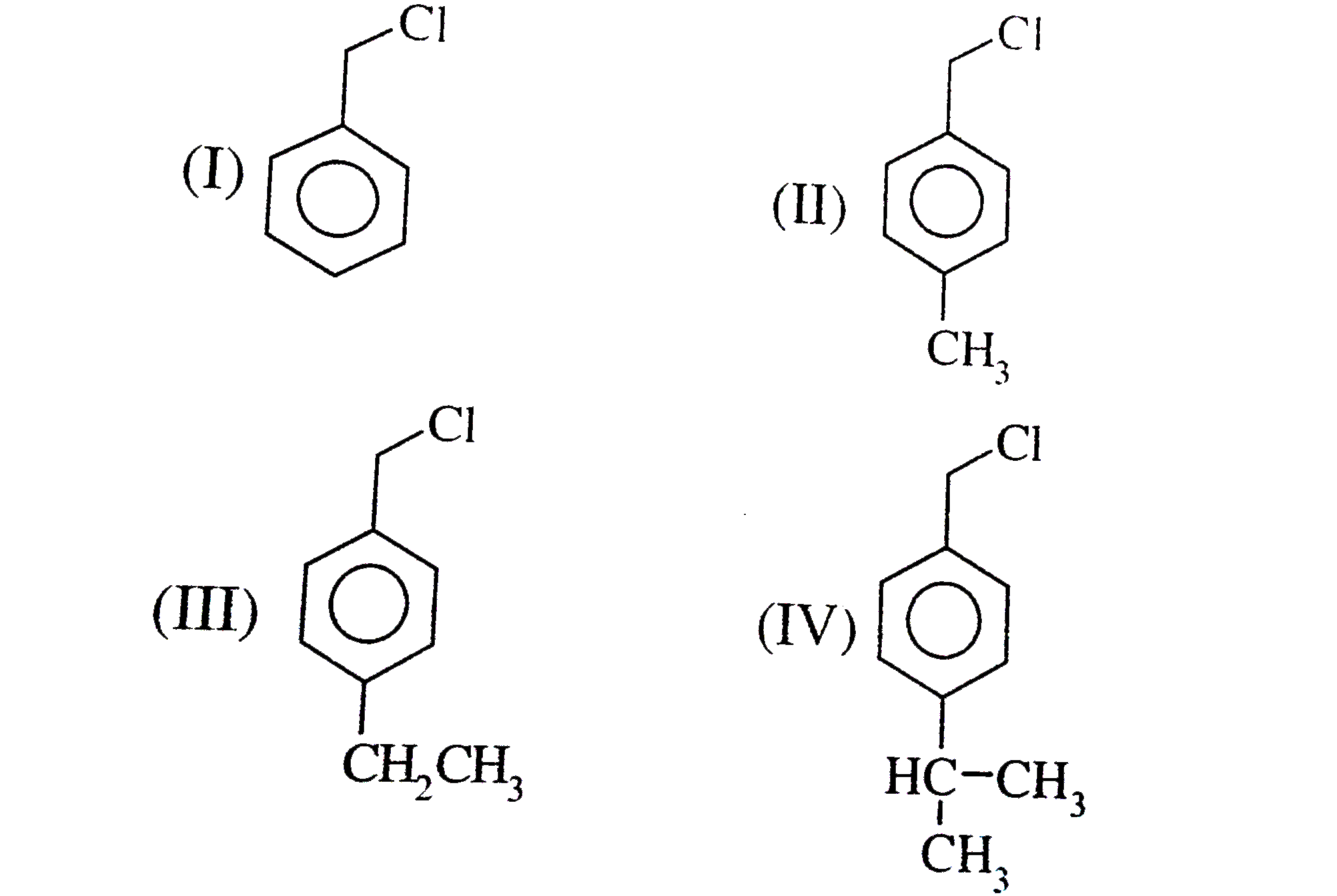The S2N reactivity order for halides :-
R–F>R–Cl>R–Br>R–I
R–I>R–Br>R–Cl>R–F
R–Br>R–l>R–Cl>R–F
R–Cl>R–Br>R–F>R–I
The correct Answer is:B
To determine the order of SN2 reactivity for the halides Rf, RCl, RBr, and Ri, we need to analyze the characteristics of the leaving groups involved in the SN2 mechanism.
1. Understanding the SN2 Mechanism:
- The SN2 (bimolecular nucleophilic substitution) mechanism involves a single step where the nucleophile attacks the carbon atom from the opposite side of the leaving group, resulting in the inversion of configuration at that carbon center.
2. Identifying the Halides:
- The halides in question are: Rf (fluoride), RCl (chloride), RBr (bromide), and Ri (iodide).
3. Evaluating Leaving Group Ability:
- The reactivity in SN2 reactions is heavily influenced by the ability of the leaving group to depart. A better leaving group will facilitate a faster reaction.
- The order of leaving group ability for halides generally follows the trend: Iodide (I⁻) > Bromide (Br⁻) > Chloride (Cl⁻) > Fluoride (F⁻).
- This trend is due to the bond strength between the carbon atom and the halide. As we move down the group in the periodic table, the size of the halogen increases, leading to longer and weaker bonds.
4. Applying the Trend to the Given Halides:
- Ri (Iodide): Best leaving group, therefore most reactive in SN2.
- RBr (Bromide): Good leaving group, less reactive than Ri but more than RCl and Rf.
- RCl (Chloride): Moderate leaving group, less reactive than RBr.
- Rf (Fluoride): Poor leaving group due to strong C-F bond, therefore least reactive in SN2.
5. Conclusion:
- Based on the analysis, the order of SN2 reactivity for the halides is:
- Ri > RBr > RCl > Rf
Final Answer:
The order of SN2 reactivity for the halides is:
Ri > RBr > RCl > Rf
- The SN2 (bimolecular nucleophilic substitution) mechanism involves a single step where the nucleophile attacks the carbon atom from the opposite side of the leaving group, resulting in the inversion of configuration at that carbon center.
- The halides in question are: Rf (fluoride), RCl (chloride), RBr (bromide), and Ri (iodide).
- The reactivity in SN2 reactions is heavily influenced by the ability of the leaving group to depart. A better leaving group will facilitate a faster reaction.
- The order of leaving group ability for halides generally follows the trend: Iodide (I⁻) > Bromide (Br⁻) > Chloride (Cl⁻) > Fluoride (F⁻).
- This trend is due to the bond strength between the carbon atom and the halide. As we move down the group in the periodic table, the size of the halogen increases, leading to longer and weaker bonds.
- Ri (Iodide): Best leaving group, therefore most reactive in SN2.
- RBr (Bromide): Good leaving group, less reactive than Ri but more than RCl and Rf.
- RCl (Chloride): Moderate leaving group, less reactive than RBr.
- Rf (Fluoride): Poor leaving group due to strong C-F bond, therefore least reactive in SN2.
- Based on the analysis, the order of SN2 reactivity for the halides is:
- Ri > RBr > RCl > Rf
The order of SN2 reactivity for the halides is:
Ri > RBr > RCl > Rf
Topper's Solved these Questions
- ALKYI HALIDEBook:MOTIONChapter:ALKYI HALIDEExercise:Exercise - 1 (Chemical Properties & Preparation methods of Diahlides)
Explore 3 Videos
- ALKYI HALIDEBook:MOTIONChapter:ALKYI HALIDEExercise:Exercise - 1 (Chemica l Properties & Preparation methods of Chloroform)
Explore 12 Videos
- ALKYI HALIDEBook:MOTIONChapter:ALKYI HALIDEExercise:Exercise - 1
Explore 7 Videos
- ALCOHOLS & ETHERSBook:MOTIONChapter:ALCOHOLS & ETHERSExercise:EXERCISE -4 (LEVEL -II) PREVIOUS YEAR JEE ADVANCED
Explore 9 Videos
- AROMATIC COMPOUNDBook:MOTIONChapter:AROMATIC COMPOUNDExercise:Exercise - 4 | Level-II
Explore 16 Videos
Similar Questions
Knowledge Check
Reactivity order for SN1
 AI>II>III>IVBII>III>IV>ICIV>III>II>IDIII>IV>II>I
AI>II>III>IVBII>III>IV>ICIV>III>II>IDIII>IV>II>IReactivity order of halides of dehydrohalogenation is
AR−F>R−Cl>R−Br>R−IBR−I>R−Br>R−Cl>R−FCR−I>R−Cl>R−Br>R−FDR−F>R−I>R−Br>R−ClThe reactivity order of alkyl halide is 3∘>2∘>1∘ in
ABoth SN1 and SN2BBoth SN2 and E2CBoth E2 and SN2DBoth SN1 and E2
(A)SN2 reaction takes place in single step.
(R) SN2 reaction involves the reactivity order of alkyl halides as 1∘>2∘>3∘ halides.
View SolutionIn the nucleophilic substitution reactions (SN2 or SN1) the reactivity of alkyl halides follows the sequence.
View SolutionThe relative reactivity of following halides toward SN2 reaction follows the roder :

View SolutionThe order of reactivity of hydrogen halides with ether is as follows
View SolutionThe order of decreasing SN1 reactivities of the halides
I CH3CH2CH2CI (II) CH2=CHCHCICH3 (III) CH3CH2CHCICH3
View Solution